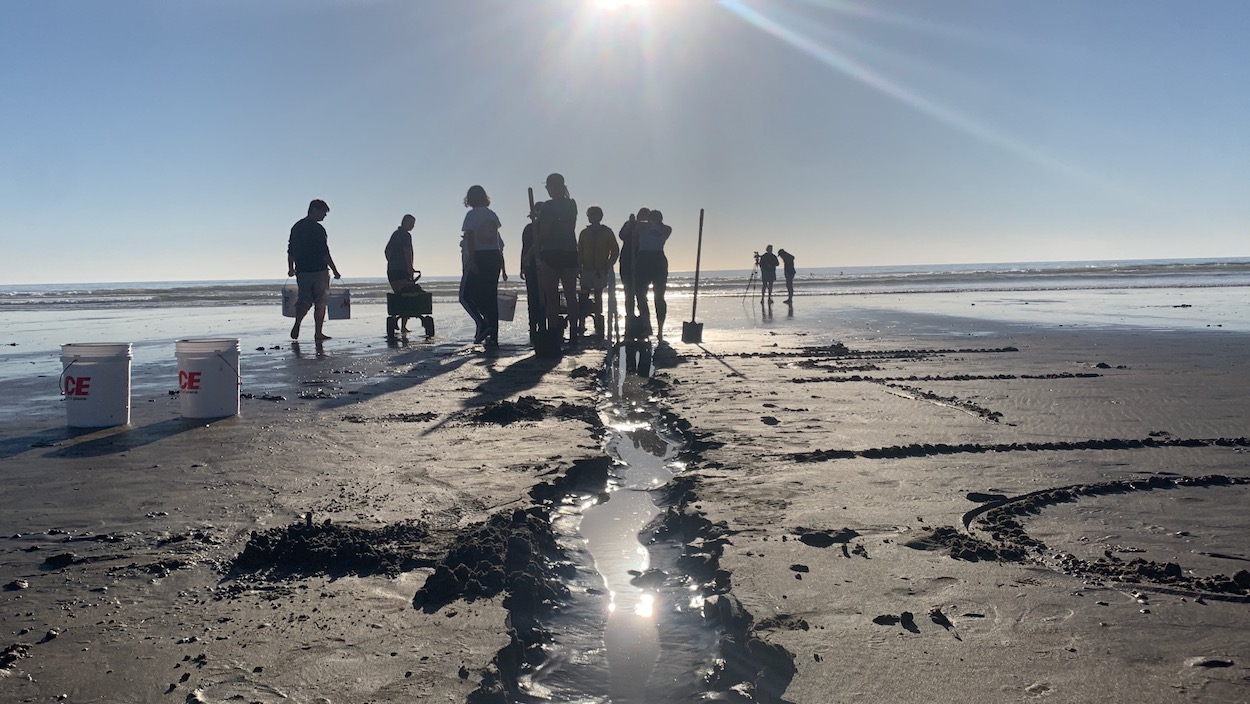Digging up an adventure: a Cal Poly Lab’s Pismo Clam Project

Pismo clams were a staple of recreational fisheries for decades, but their population declined by the 1980s. The last clam of legal fishing size of four and a half inches was found in 1993, but since 2015, the Ruttenberg Lab at Cal Poly has been able to witness a rise in the clams’ population.
Graduate student Marissa Bills is one of the key leaders of the Pismo Clam Project.
“From 2015 we started seeing more and more clams every single year, not huge numbers but more and more every year,” Bills said. “And then in 2021, we saw a huge explosion of their population where we went from maybe a couple hundred clams at a survey to our like biggest survey ever. We found over 10,000 clams in a single day in our three survey lines.”
The lab, led by Cal Poly professor Ben Ruttenberg, partnered with the City of Pismo Beach to monitor the clams. The ultimate goal of the project is to understand the decline, and now growth, in their population.
A main aspect of the project are the monthly surveys, where student volunteers gather during the lowest tide on Pismo Beach. The lowest tide varies from season to season, with times ranging anywhere from 3 a.m. to 4 p.m.
During these four-hour surveys, volunteers dig for clams along the shoreline and shovel them into a cart. The clams are then rinsed off in the ocean to remove sand and then hauled back to the beach to be measured and recorded. The clams are then returned to their trenches where they begin to dig themselves back in the sand.
The ten-year data set examines the clam’s abundance and size over time, giving researchers an important insight into the invertebrate population. Currently, the group is still trying to understand why the clam’s population declined, why they are resurfacing now and whether or not the growing population will stay consistent.
Field Team Lead Isa Mattioli believes the clams are a good subject to study.
“We have like a unique opportunity that’s not present in all marine species to literally be able to pick up a good amount of them, count them, measure them,” Mattioli said. “Which is not possible for maybe fish that live on the ocean and it’s much more difficult to access them or live larger animals, stuff like that.”
Despite the tough conditions, Bills and the student volunteers say it’s worth the effort.
“In the summer we have to be here around 3 a.m. so that is definitely when we are questioning our life choices,” Bills said. “But this project is just so cool in so many different ways and it’s also really fun to get to work on a species that’s actually doing well, so they’re really coming back in the last couple of years which is super exciting”
The project also offers volunteers an opportunity to connect with others and even the clams themselves.
“They’re pretty cute. I didn’t know I was going to love clams as much as I do, but we all get attached really fast,” Bills said.
Clams clean and filter the coastal waters and act as an important food source for seagulls and otters. Bills emphasizes the importance of protecting the clams by limiting the poaching in the area, a common threat to the population.
“Reporting poaching if you’re seeing it helps us just kind of protect this population and hopefully see it come back and persist for a long time,” Bills said.
More information about the study and becoming a volunteer can be found on the Ruttenberg Lab website or their Instagram and TikTok. The Ruttenberg Lab welcomes volunteers of all experiences and majors to join the surveys.

